Traditional weather lore has it that St. Dunstan was a great brewer who sold himself to the devil on the condition that the devil would blight the apple trees to stop the production of cider, Dunstan’s rival drink. This is said to be the cause of the wintry blast that usually comes about this time. (May 19)
Foggier yet, and colder! Piercing, searching, biting cold. If the good Saint Dunstan had but nipped the Evil Spirit’s nose with a touch of such weather as that, instead of using his familiar weapons, then, indeed, he would have roared to lusty purpose.
~A Christmas Carol
This piece of folklore seeks to explain the late May frosts, known as ‘Franklin Days’ in the West Country, which often hit between 17-19 or 19-21 May. The tale was apparently particularly popular in Devon in the 19th and 20th centuries and goes thus:
Dunstan had bought some barley and made some beer, which he then hoped to sell for a good price. Seeing this the Devil appeared before him and offered to blight the local apple trees with frost (the tale is presumably set in Somerset, perhaps when Dunstan is Abbot of Glastonbury). This would ensure there was no cider and so drive demand for beer. Dunstan accepted the offer but stipulated that the frost should strike from the 17-19 May.
Stories About St. Dustan and the Devil:
According to legend, St. Dunstan had a number of encounters with the devil. The most famous story, which entered popular folklore, tells how he pulled the devil by the nose with his blacksmith’s tongs.
The story goes that while he was living as a hermit in a cell at Glastonbury, he occupied himself with various crafts, including metalwork. Against the old church of St Mary he built a small cell five feet long and two and a half feet deep. It was there that Dunstan studied, worked at his handicrafts, and played on his harp. It is at this time, according to a late 11th-century legend, that the Devil is said to have tempted Dunstan.
One day, as evening was coming on, an old man appeared at his window and asked him to make a chalice for him. Setting aside what he was working on, Dunstan agreed to the request and set to work. But as he was working his visitor began to change shape: one moment he was an old man, then a young boy, then a seductive woman.
Dunstan realized that his guest was the devil; but, pretending not to notice, he went on with his task. He took up the tongs from among his tools and laid them in the fire, waiting until they were red-hot. Then, pulling them out of the fire, he turned round and seized the devil by the nose with the tongs. The devil struggled and screamed, but Dunstan held on until at last he felt he had triumphed. Then he threw the devil out of his cell and it fled, running down the street and crying “Woe is me! What has that bald devil done to me? Look at me, a poor wretch, look how he has tortured me!”
St Dunstan stood in his ivied Tower,
Alembic, crucible, all were there;
When in came Nick to play him a trick,
In guise of a damsel passing fair.
Every one knows
How the story goes:
He took up the tongs and caught hold of his nose.
~Lay of St Dunstan, 1840
Many people heard and saw this, and the following day they came to Dunstan and asked him what had happened. He said to them, “These are the tricks of devils, who try to trap us with their snares whenever they can. But if we remain firm in the service of Christ, we can easily defeat them with his help, and they will flee from us in confusion.” And from that time he dwelt safely in his little cell.
The story was of course retold in other forms, as here in playful fashion in the South English Legendary:
þe deuel he hente bi þe nose & wel faste drou;
He twengde & ssok hure bi þe nose þat þe fur out blaste.
þe deuel wrickede here & þere & he huld euere faste,
He 3al & hupte & drou a3en & made grislich bere.
He nolde for al is bi3ete þat he hadde icome þere!
Wiþ is tonge he strok is nose & twengde him euere sore,
Forte it was wiþinne ni3te þat he ne mi3te iseo namore.
þe ssrewe was glad & bliþe inou þo he was out of is honde
And flei & gradde bi þe lift þat me hurde into al þe londe:
“Out, wat haþ þis calwe ido? wat haþ þis calwe ido?”
In þe contreie me hurde wide hou þe ssrewe gradde so.
As god þe ssrewe hadde ibeo habbe ysnut atom is nose,
He ne hi3ede namore þuderward to tilie him of þe pose.
He seized the devil by the nose and pulled very hard; he tweaked and shook him by the nose so that fire burst out. The devil wriggled here and there, and he still held fast. He yelled and hopped and pulled away and made a horrible commotion. He wished for all the world that he’d never come there! With his tongs Dunstan yanked at his nose and nipped him very sore, until night came on and he could no longer see. The villain was glad and happy indeed that he was out of his hands, and fled and cried out so it was heard all over the land: “Alas, what’s this bald one done? What’s this bald one done?” It was heard far around how the wicked one cried out. The villain had got such a good tweaking of his nose, he never hurried back there again to heal his cold!
On another occasion, when Dunstan was praying alone, the devil appeared to him in the likeness of a wolf with a gaping mouth, snarling and baring his teeth. Dunstan would not be distracted from concentration on his prayers, so the devil suddenly changed himself into a little fox, trying to get Dunstan’s attention by jumping about, contorting himself and trying to get Dunstan to laugh at him.
But, smiling a little, Dunstan only said, “You are revealing how you usually behave: by your tricks you flatter the unwary so that you can devour them. Now get out of here, wretch, since Christ, who crushed the lion and the dragon with his heel, will overcome you by his grace through me, whether you’re a wolf or a fox.”
Another legend regarding the Devil and St. Dunstan also occurred in Mayfield when the convent there had just been built. The Devil appeared to St. Dunstan and said that he was going to knock down all the houses in the village. St. Dunstan bargained with the Devil and got him to agree to leave standing any house with a horseshoe on the outside. At that time, the custom of nailing horseshoes to doors for luck wasn’t well known so the Devil agreed but St. Dunstan managed to nail a horseshoe to all the houses in the village before the Devil could get to them so the village was saved.
The Devil managed to get some measure of revenge against St. Dunstan by repeatedly setting Mayfield church, then built of wood, off its normal East-West axis, leaving St. Dunstan to repeatedly correct it. According to the lore, this was accoplished by pushing the church back into the proper east-west alignment with his shoulder!
Another church is involved with yet another St. Dunstan story. This time it is the steeple of the church in the village of Brookland, just over the border into Kent. The Devil took the steeple and was chased by St. Dunstan who caused the Devil to drop the steeple near Hastings by application of the tongs mentioned in the Mayfield story.
According to one version of the story, the injured devil flew off from Mayfield to cool his nose in the springs of Tunbridge Wells, and that’s how its famous waters got their reddish tint (don’t let anyone tell you it’s because of the iron in the water). Alternatively, he flew away with the tongs still attached to his nose, and they dropped off in the place near Brighton which is now called Tongdean (for, I hope, obvious reasons).
About Saint Dustan:
- Feastday: May 19
- Patron of armorers, goldsmiths, locksmiths, and jewelers
Born of a noble family at Baltonsborough, near Glastonbury, England, Dunstan was educated there by Irish monks and while still a youth, was sent to the court of King Athelstan. He became a Benedictine monk about 934 and was ordained by his uncle, St. Alphege, Bishop of Winchester, about 939.
After a time as a hermit at Glastonbury, Dunstan was recalled to the royal court by King Edmund, who appointed him abbot of Glastonbury Abbey in 943. He developed the Abbey into a great center of learning while revitalizing other monasteries in the area. He became advisor to King Edred on his accession to the throne when Edmund was murdered, and began a far-reaching reform of all the monasteries in Edred’s realm.
Dunstan also became deeply involved in secular politics and incurred the enmity of the West Saxon nobles for denouncing their immorality and for urging peace with the Danes. When Edwy succeeded his uncle Edred as king in 955, he became Dunstan’s bitter enemy for the Abbot’s strong censure of his scandalous lifestyle. Edwy confiscated his property and banished him from his kingdom.
Dunstan went to Ghent in Flanders but soon returned when a rebellion replaced Edwy with his brother Edgar, who appointed Dunstan Bishop of Worcester and London in 957. When Edwy died in 959, the civil strife ended and the country was reunited under Edgar, who appointed Dunstan Archbishop of Canterbury. The king and archbishop then planned a thorough reform of Church and state.
Dunstan was appointed legate by Pope John XII, and with St. Ethelwold and St. Oswald, restored ecclesiastical discipline, rebuilt many of the monasteries destroyed by the Danish invaders, replaced inept secular priests with monks, and enforced the widespread reforms they put into effect. Dunstan served as Edgar’s chief advisor for sixteen years and did not hesitate to reprimand him when he thought it deserved.
When Edgar died, Dunstan helped elect Edward the martyr king and then his half brother Ethelred, when Edward died soon after his election. Under Ethelred, Dunstan’s influence began to wane and he retired from politics to Canterbury to teach at the Cathedral school and died there. Dunstan has been called the reviver of monasticism in England. He was a noted musician, played the harp, composed several hymns, notably Kyrie Rex splendens, was a skilled metal worker, and illuminated manuscripts.
Sources:
Krazelna: Day of Hekate
Krazelna: Day of Hekate
Krazelna: Day of Hekate
Rachel V Perry: Emancipation Day
Rachel: The Nemesia
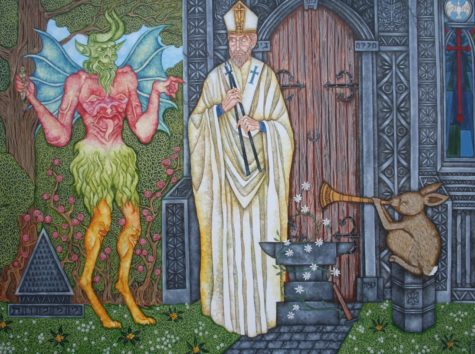
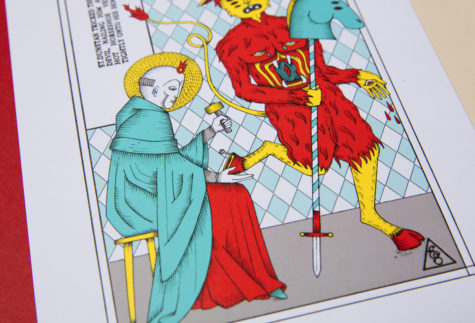
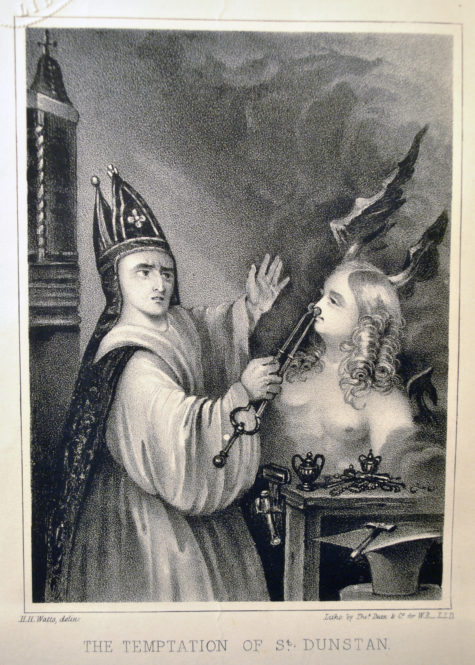
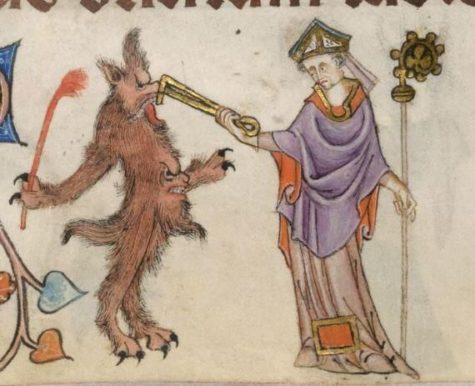
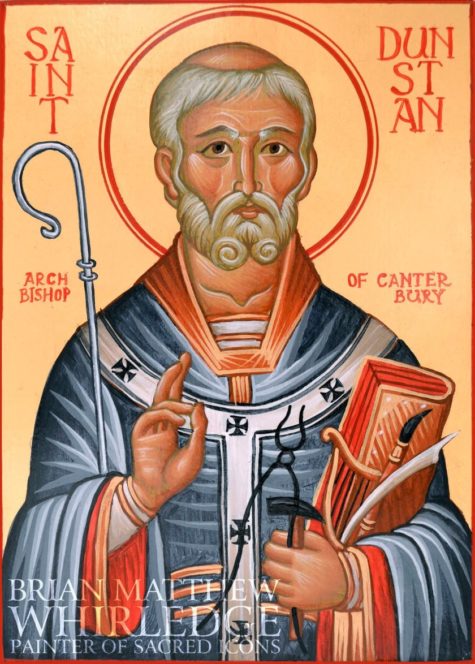



Leave a Reply